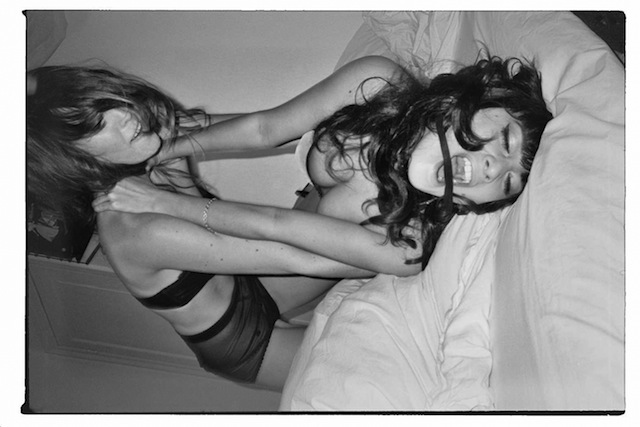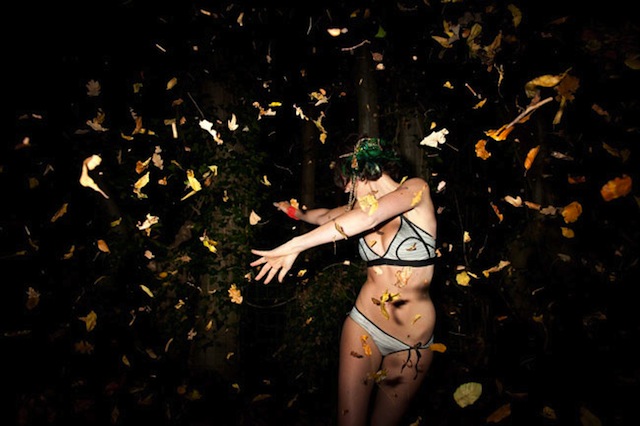La Fille d’O are no strangers to controversy. For over ten years the Belgian lingerie brand have courted celebration and scorn through their highly eroticised designs and candid perspective on female sexuality. Desired for comfort, quality and kink, lingerie has rarely been so lascivious – or thought provoking.
The thematic intent of La Fille d’O can be sourced from their title. Translated as Daughter of O, the name is a reference to controversial French narrative Story of O: a powerfully erotic tale of submission and slavery, in which a successful female photographer succumbs to the dangerous allure of a mysterious, dominant man. The heroine relinquishes her independence to become a willing object of desire, enduring bondage and a great many sexual torments in order to prove her love and win the eternal appreciation of her master.
Suffice to say, Story of O is not feminist literature. But Murielle Scherre, founder La Fille d’O and a powerful advocate for women, was fascinated with the dichotomy of the narrative. She felt it spoke to an issue many women are familiar with but few are willing to address in public: “we consider ourselves liberated and post-feminists but still are aching to please and to be adored. It’s hard to combine that loathing and loving of attention.”
This dichotomy is a journey of self-discovery and expression the Belgian designer hopes many women will join her on. And considering her devoted fan base, both in Europe and increasingly in the United States, Scherre has certainly managed to strike a chord with her beliefs.

Scherre has always been captivated by lingerie, but it was during her time as a designer in fashion school she realised just how much she preferred working with the curves and contours of the human body.
After graduating, Scherre worked for a number of fashion companies, an experience that left her disillusioned with an industry more preoccupied with unrealistic artistry than the practical applications of the garments they conceive.
The designer wished to create avant-garde pieces within the grounded framework of reality; and so, she followed her passion of lingerie by opening La Fille d’O. Starting as a team of one within her own house, Scherre modelled her first collection after her graduation concept: Bettie Page versus Lolita, the never-ending struggle between sex siren and innocent that Scherre believes many women are familiar with.
The fabrics used in the collection reflected the theme; an eclectic mix of cotton, black leather and see-through mesh Scherre believes to reflect the duality of womanhood. The theme has since become a consistent motif of La Fille d’O. Bodysuits, exposed breasts and the notion of bondage all play a key conceptual role within their lingerie designs – just as they played a key role within Story of O.
“One day I can be a mother, an entrepreneur, a woman, a girlfriend, and a boss, as well as an object of lust. I want my lingerie to support that.”
Titillating though it may be, the notion of kink in lingerie isn’t exactly revolutionary. What separates the label from their competition is the quality of their handmade designs and their dedication to the comfort of women, no matter their shape or form.
Scherre has always been fascinated with the evolution of lingerie; after discovering that cupsizes are a relatively new concept in the world of undergarments, the designer decided to incorporate traditional made-to-measure ideals with modern sizing, as a means to offer women a more robust selection of lingerie.
A single bra by La Fille d’O can be adjusted to fit three separate contours. While this gives her clients three times the flexibility, it means far less potential stock is sold. But Scherre doesn’t seem to mind: she’s more interested in the women she can potentially help than the profits she could potentially make. And as she humorously points out, her reinvention of the bra earns her a special place in “lingerie designer’s heaven.”
It’s a grounded approach to femininity the designer extends to her campaigns. Scherre famously refuses to digitally enhance models in any way, preferring to find beauty in the sometimes-confronting confines of reality:
“I feel fooled with all this touching up and improving the goodness that surrounds us. It bores the hell out of me. I want to see the bruises on your skin because it makes me happy to see you are out there…”
Her outlook hasn’t always been well received. In 2010, a particularly suggestive campaign entitled Catfight drew ire for its supposed depiction of domestic violence. The campaign, involving two scantily clad models in the throes of a heated struggle, toed the thin line between advocating violence and expressing the passionate eroticism at the core of the label’s philosophy.

Scherre isn’t afraid to step into the spotlight herself in order to advocate her unique perspective on sex. The designer released a no-holds-barred autobiography in 2005, following it up two years later with Kruisverhoor, an intimate recounting of the 58 lovers she held prior to the release of the book.
She was also instrumental in the release of the film J’fais Du Porno Et J’aime Ca, or I Make Porn and I Like It. The film, orchestrated as a stunt by a Danish radio show, depicted real couples having real sex and was so provocative it was banned from release!
La Fille d’O is clearly not for every woman. Their sensuous adaptation of bondage themes and contentious views on female sexuality will continue to ruffle feathers. But for Scherre, the controversy means little. What has always been most important to the designer remains at the top of her priorities: aiding the women who look to lingerie as a means of improving their lives.
She may embrace her submissive side, but Scherre speaks volumes about the power of women through her label:
“In French a bra is called ‘un soutien’ which means a support. We support women’s self-esteem, beauty, awareness, and how they want to show themselves, hide themselves, or empower themselves. I want women to drop all the ideas we have about beauty or what we need to look like.”










